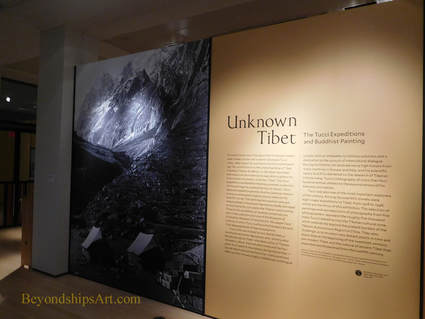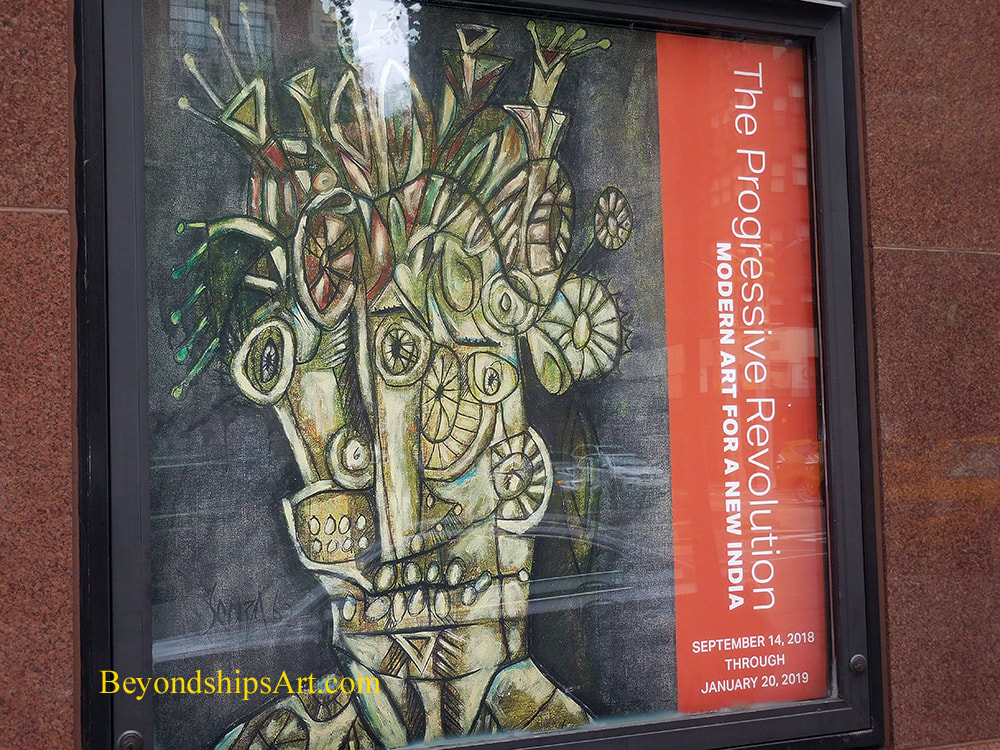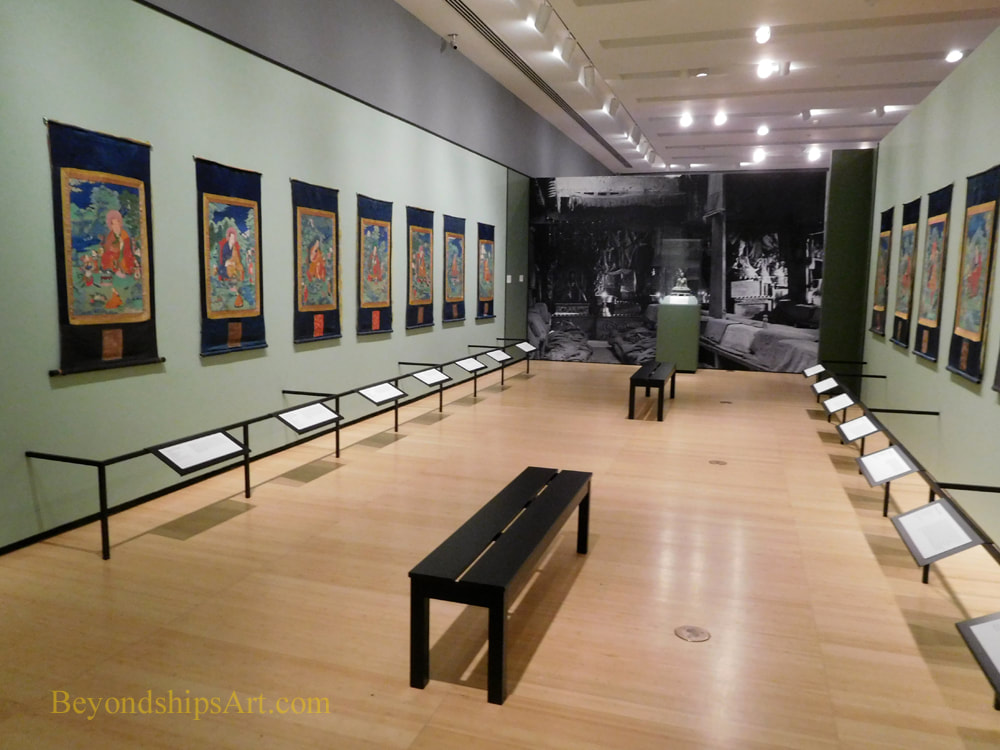|
Click here for our review of "Progressive Revolution:Modern Art For A New India" at the Asia Society Museum in New York City.
 "Unknown Tibet: The Tucci Expeditions and Buddist Painting” at the Asia Society Museum in New York City presents a selection of Tibetan paintings collected during the expeditions of Giuseppe Tucci during his expeditions to Tibet along with some of the photographs that were taken during the expedition. The paintings in the exhibit are from the Museum of Civilisation-Museum of Oriental Art "Giuseppe Tucci," in Rome and are being shown for the first time in the United States. Giuseppe Tucci was a writer, scholar and explorer who made eight expeditions to Tibet during the period 1926 to 1948. Up to that time, Tibet was a remote mystery and Tibetan culture largely unknown outside of Tibet. Tucci traveled some 5,000 miles on foot and on horseback across the Tibetan plateau, In addition to meeting people and seeing places, he obtained permission to collect examples of Tibetan culture for study outside the country. In addition, Tucci brought along photographers to document the expeditions. Their mission included photographing monuments, cultural artifacts, people and their occupations. In other words, they made a systematic effort to document this ancient culture before it vanished. The exhibition presents copies of some of the 14,000 photographs that were taken. Done in black and white, with strong contrast, the images are artistic in themselves. They reveal a treeless, stark world populated by people who are both rugged and spiritual. The core of the exhibition, however, is the paintings. Done on fabric, the majority of these paintings are religious paintings designed to be an aid in meditation and ritual. Most relate to Buddhism but some relate to earlier religions. Deemed to be in too poor condition to be used in religious practice, Tucci acquired paintings by purchase and by gift. A number of the paintings were discovered in a cave by one of his photographers. The ones on exhibit have now been restored. The paintings are full of religious symbols and meaning. Indeed, even the 17th century Arhat paintings, which look at first glance like a series of portraits, have symbolic meaning. The Arhats were disciples of the Shakyamuni Buddha. In each of the paintings, there is a dominant central figure. Around him are various figures and animals, each of which relates to some aspect of the central figure's life. Furthermore, the paintings relate to each other as they were to be hung in a certain order in the temple. Leaving aside their religious meaning, the paintings work as art. The figures are done delicately with relatively few lines, avoiding unnecesary detail. Beyond the figures are serene landscapes Flat and two dimensional, the images also have an abstract appeal. The restored colors are bright and appealing. |
AuthorRich Wagner is a writer, photographer and artist. Archives
November 2018
Categories
All
|


 RSS Feed
RSS Feed